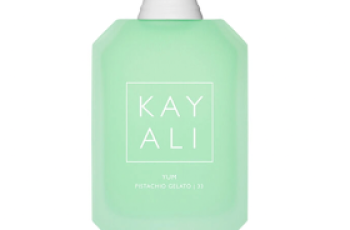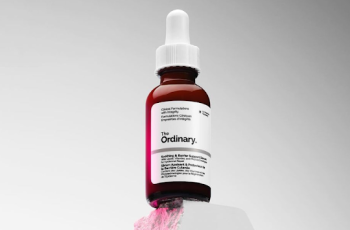
How to Layer Hyaluronic Acid and Retinol
Let’s face it, there are so many products available in the beauty industry sometimes knowing where to start can feel the same as staring up the summit of Everest! Even with the help of your skincare Tenzing, understanding how to layer different skincare ingredients can begin to feel overwhelming and sometimes frustrating.
Today I plan to shed some light on how to layer hyaluronic acid and retinol together. Hopefully by the end of today’s information I would have turned your Everest into a mole hill!
Can you use hyaluronic acid with retinol?
Yes, you can use hyaluronic acid with retinol together and it’s perfectly safe to do so. In fact, using hyaluronic acid with retinol has synergistic effect on your skin because they complement each other. This is because retinol usually causes irritation, dryness and flaking while hyaluronic acid hydrates your skin and increases your skin’s ability to tolerate irritation and reduces the flaking and dryness caused by retinol. In other words, when used together, hyaluronic acid and retinol are the perfect dynamic duo.
Should I use Hyaluronic Acid before or after Retinol?
You should use hyaluronic acid after retinol. And to maximise the benefits, you should use retinol first and then wait at least 30 minutes before applying hyaluronic acid. That’s because you need to allow the retinol to soak into your skin first and then use hyaluronic acid to hydrate your skin and increase your skin’s ability to tolerate irritation and reduce the flaking and dryness caused by retinol. Replenish moisture after applying retinol should be an essential step in your skincare routine.
How do you layer retinol and hyaluronic acid together?
Hyaluronic Acid and retinol are potent powerhouses in their own right and when teaming them together you will find they each perform effective results on the skin without causing too much irritation. There are of course some difference between the two of them which are as follows.
Hyaluronic Acid
Naturally occurring in the body, hyaluronic acid is a clever ingredient that is able to hold hugely impressive amounts of water to the skin. It is able to draw water into the skin’s protective barrier and keeps the skin hydrated and healthy throughout the day. This will not only keep you looking glowing and youthful, but you’ll find the skin is able to protect itself fully from exposure to free radical damage, such as pollution, UV rays and other environmental aggressors.
Retinol
A potent form of vitamin A, retinol has a unique talent of speeding up the skin’s cell renewal cycle resulting in a new skin layer reaching the surface. You’ll find the skin surface is left looking luminous with signs of premature ageing, such as fine lines and wrinkles significantly reduced with dark spots and hyperpigmentation visibly improved. As potent as this ingredient is, it is one of the most complicated to use which is why I suggest checking out our dedicated blog post about retinol and how to introduce it into your routine.
I have mentioned the rule of applying skincare products a couple of times in previous blog posts. The general idea is to start with the thinnest consistency and work your way up to the thickest. This will not only enable your routine to work effectively but also helps you gain a better understanding of how to layer your products.
When it comes to retinol and hyaluronic acid you’ll find they are both usually found in formulas that are either serums, moisturisers or face oils meaning they feature in the last steps of your daily skincare routine. When it comes to the correct order, you first start with a serum, then oil followed by a moisturiser, depending on which product either ingredient is formulated into will determine which order they are applied. The beauty (pun intended) of layering retinol and hyaluronic acid together is that the humectant traits of HA will hydrate the skin. This will result in it preventing the common dryness and irritation that often occurs with using retinol.
Can I apply hyaluronic acid after retinol?
Yes, absolutely. For potent ingredients such as hyaluronic acid and retinol to gain optimal results, you need to ensure they remain on the skin for an optimal amount of time. This is probably why you’ll find that most skincare products containing these powerhouses are serums, face oils and moisturisers. By applying them both to the skin you’ll ensure there are limited drying results from retinol with an added hydrated boost from hyaluronic acid.
This also means some consideration needs to be taken when using any formulas containing either ingredient and I strongly suggest you perform a 24 hours patch. You do this by applying a pea sized amount on your inner forearm and leave it to see how your skin reacts. This is particularly important for products containing retinol as this needs to be introduced slowly into your routine to avoid any unwanted severe dryness and flaking of the skin.
What layers should you not use with retinol?
It is said that when using retinol you need to remember to not overload the skin with products containing high percentages of vitamin C, AHAs, such as glycolic acid and BHAs such as salicylic acid. With a mixture of different pH levels and the exfoliating benefits of the popular acids will often result in the skin becoming flushed, itchy and irritated.
However, this doesn’t mean you can’t use all these ingredients in your daily routine. For optimal results try using vitamin C serum in the mornings after using a gentle cleanser or toner containing either an AHA or BHA, not forgetting of course, to apply a SPF 30 as your final step to fully protect the skin. Once you have reached the evening this is when you can apply your retinol. This will not only allow the vitamin A to work tirelessly overnight whilst you catch your beauty sleep, but due to the fact that any exposure to UV rays renders retinol useless by losing its potency, you will be gaining the full effects of this anti-ageing skin hero ingredient. If you are wanting to learn more about what not to mix with retinol you can check out our blog post all about the dos and don’ts of using retinol in your daily routine.
How long should you wait to apply moisturiser after retinol?
Allowing 10 minutes before applying a moisturiser after retinol is plenty of time, you’ll find that is enables retinol to reach the lower layers of the skin enabling it to kick start the cell renewal process whilst boosting the collagen production found in the dermis of the skin. Once you have applied a moisturiser not only are you calming the skin and counteracting the drying effects of retinol, you are also forming a physical protective barrier over the skin. This barrier will keep the skin’s microbiome balanced and fully functioning meaning it will act like a wet sponge soaking in every drop of retinol leaving you with a rejuvenated and glowing skin by morning.
What order should I put my serums on?
The basic skincare rule is to apply your products in order of thickness and consistency, starting with the thinnest and working your way up. You’ll often find that serums have a light weight gel-like consistency that can sometimes feel as though you need to apply them last. However, surprisingly for some, you must always apply serums before any face oils or moisturisers. This is due to the fact that serums penetrate further into the skin and deliver active ingredients into the lower layers of the dermis, reaching areas moisturisers and face oils are unable to.
When it comes to figuring out which serums to layer on top of each other, I would recommend to not exceed three as this may have counteractive effects on the active ingredients found in the formulations. If you are using serums containing both retinol and another with hyaluronic acid for example, I would apply the retinol first followed with the hyaluronic acid serum to avoid any dryness or irritation to the skin, and lock moisture into the surface keeping the complexion plumped, healthy, with a youthful bounce.
I hope that today’s blog post clears up a few things about how to layer hyaluronic acid and retinol together, it is quite easy once you get the hang of product layering and you’ll be so impressed with the results!


